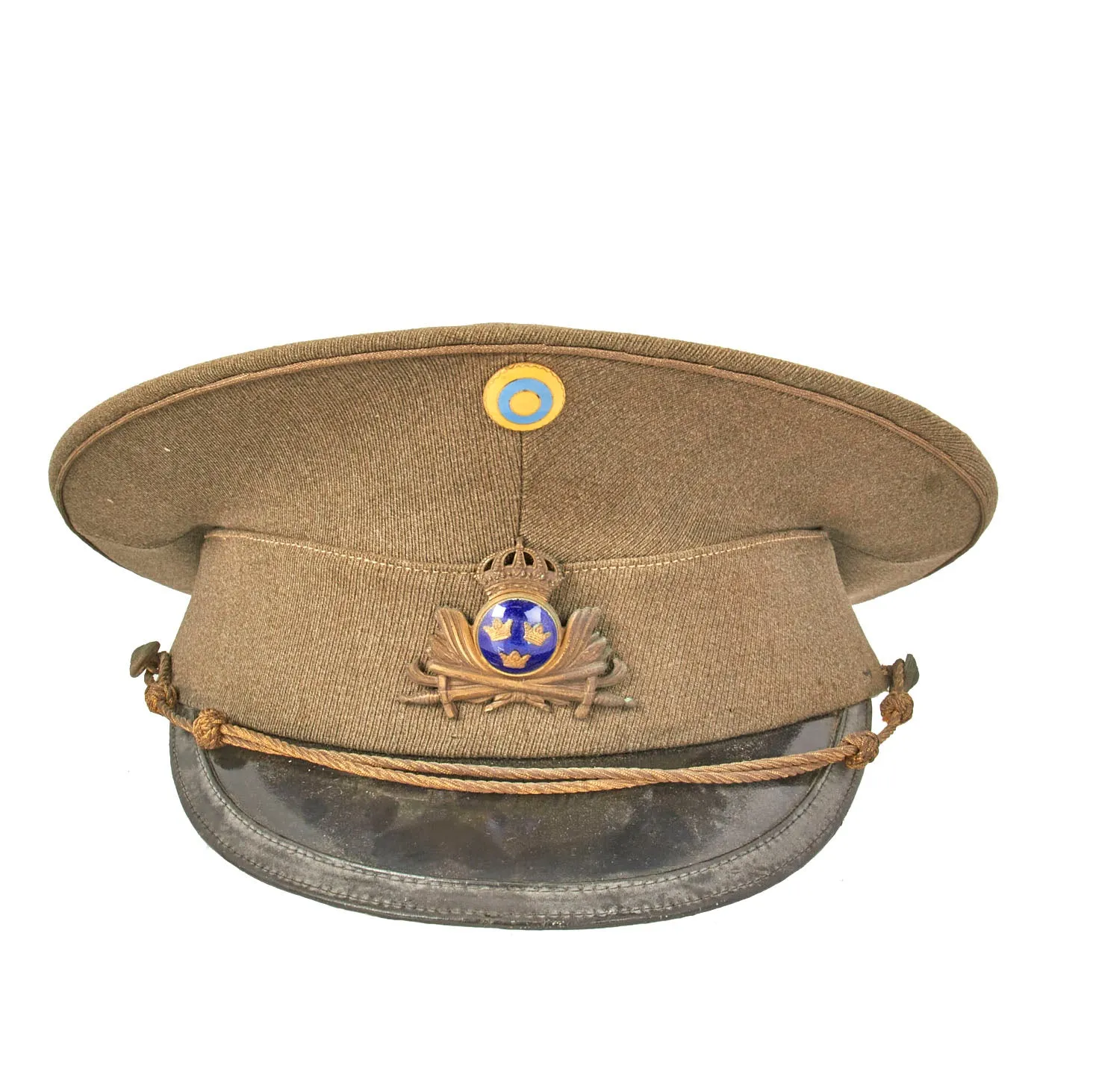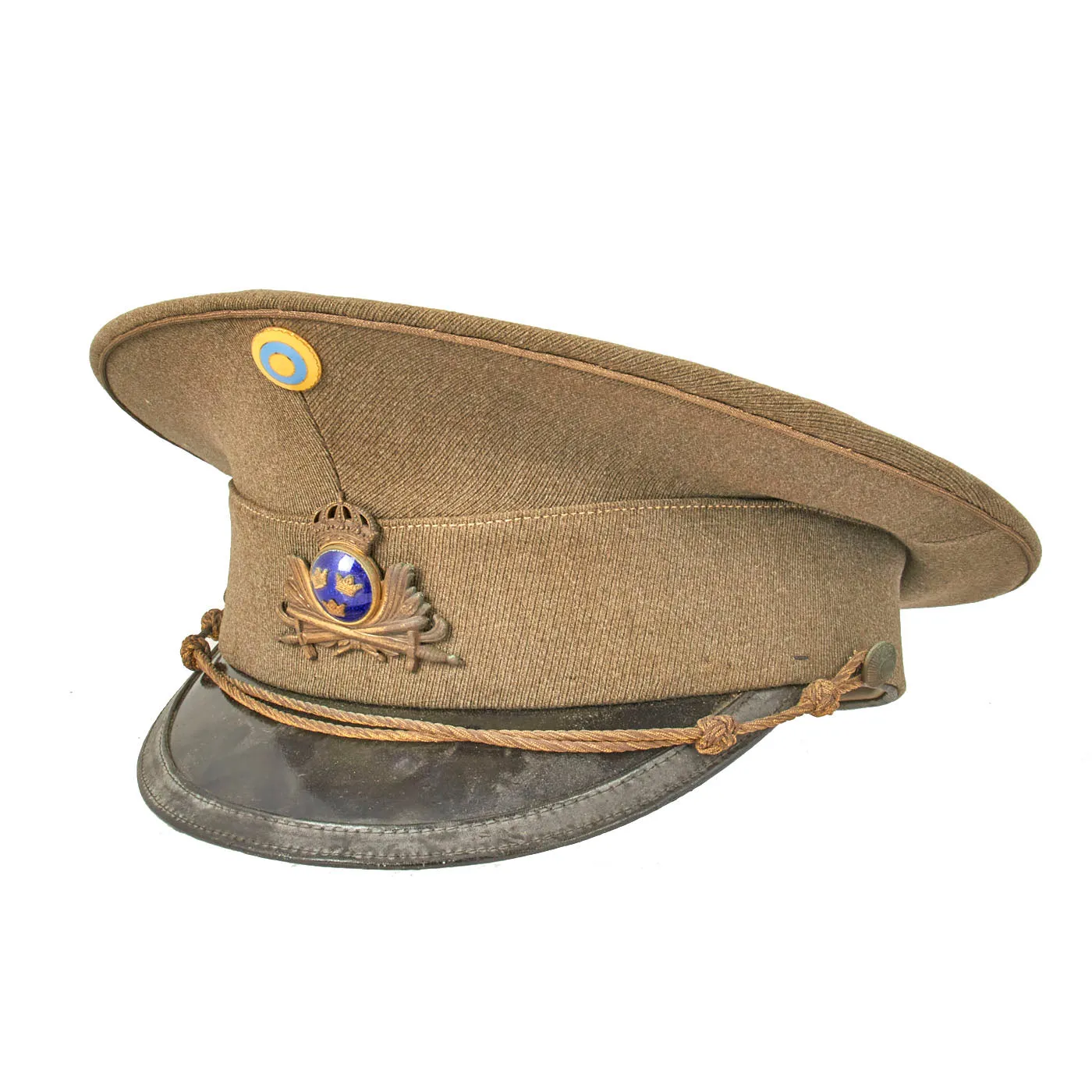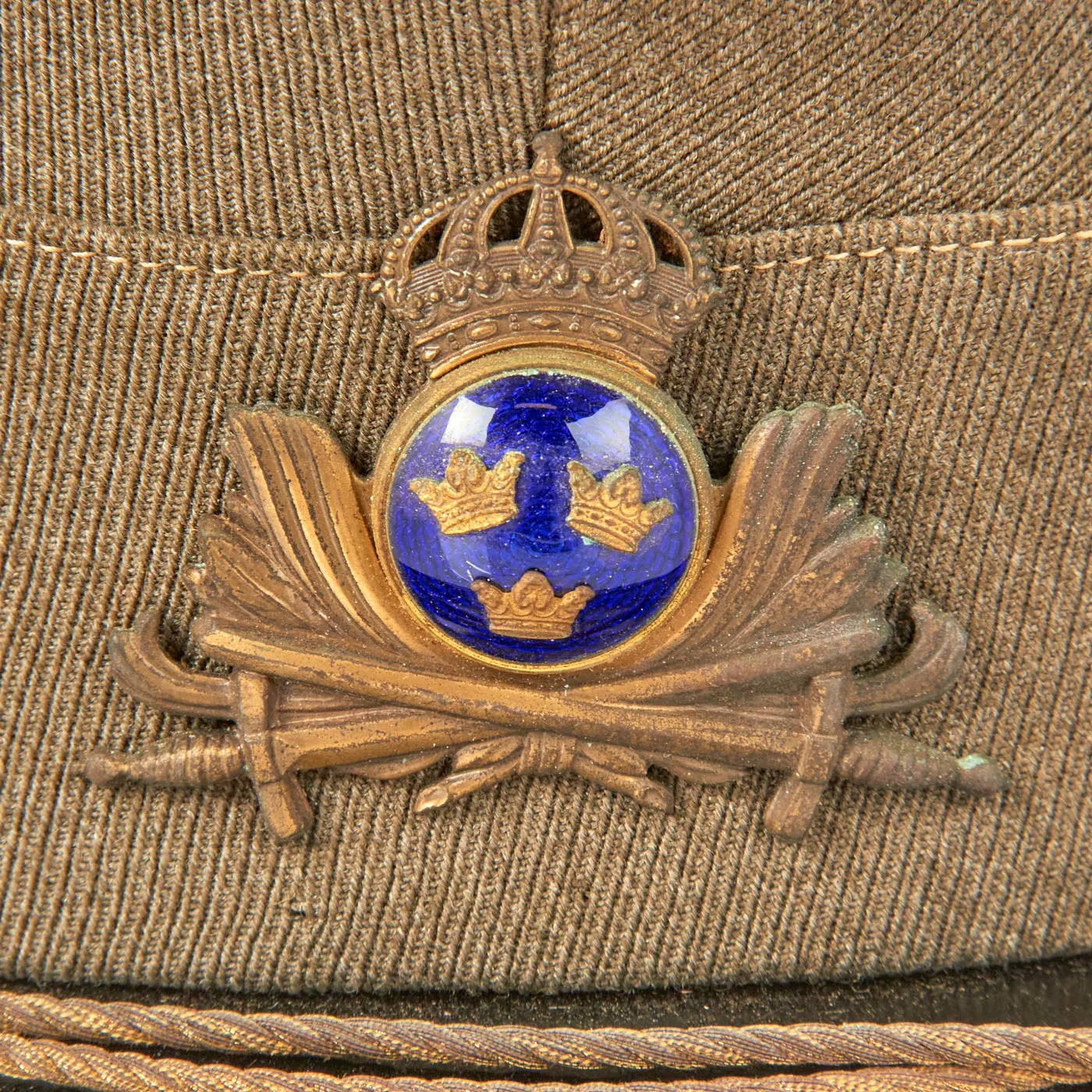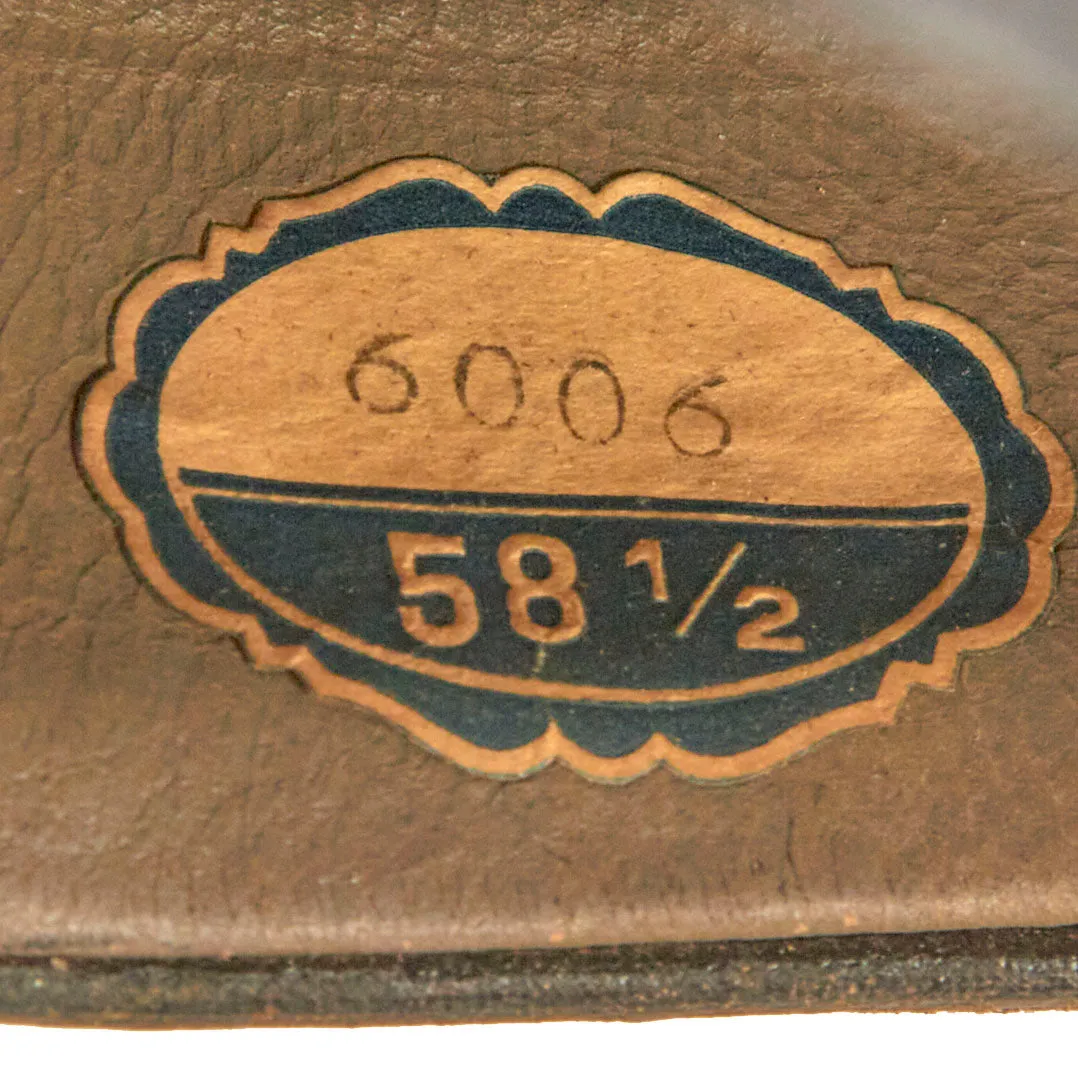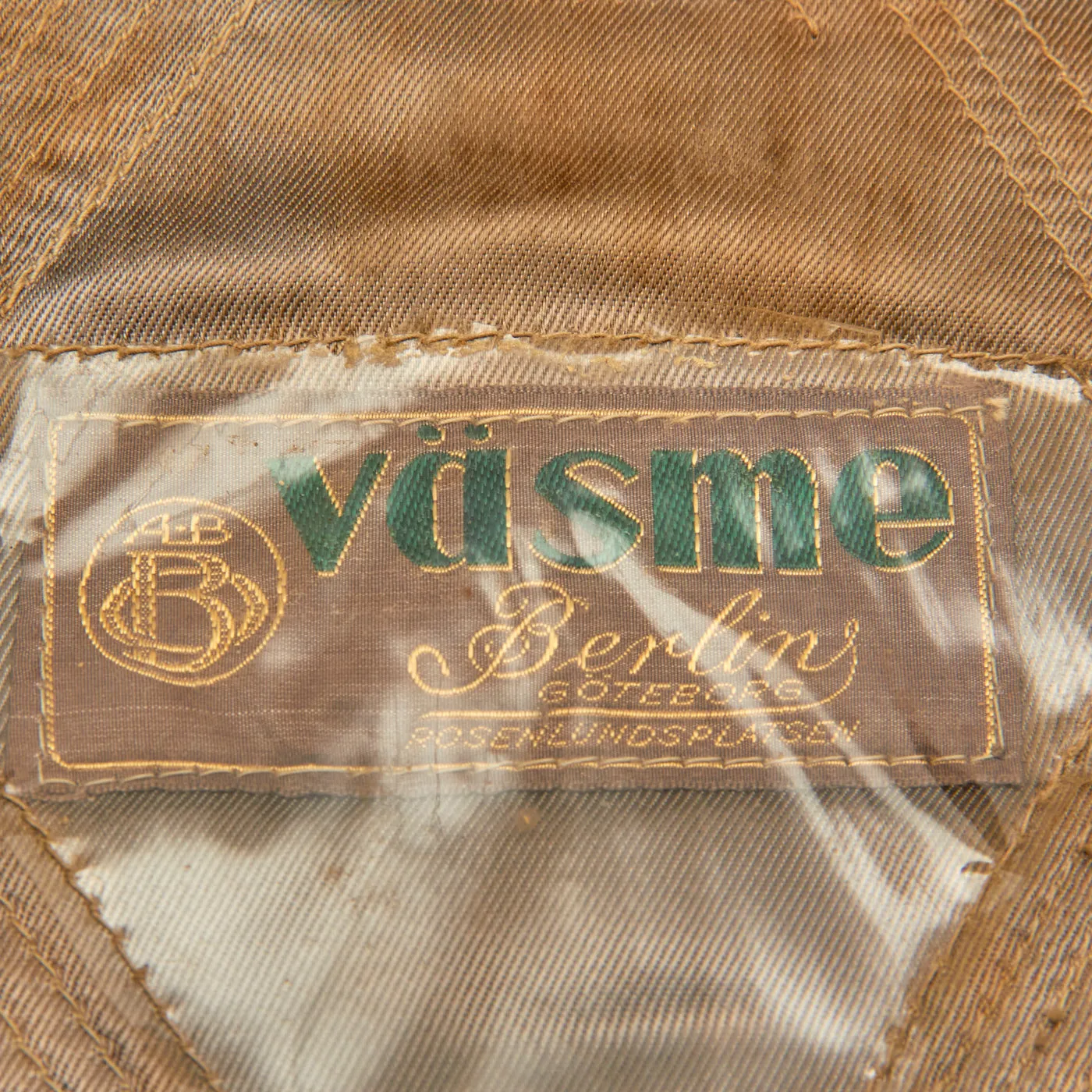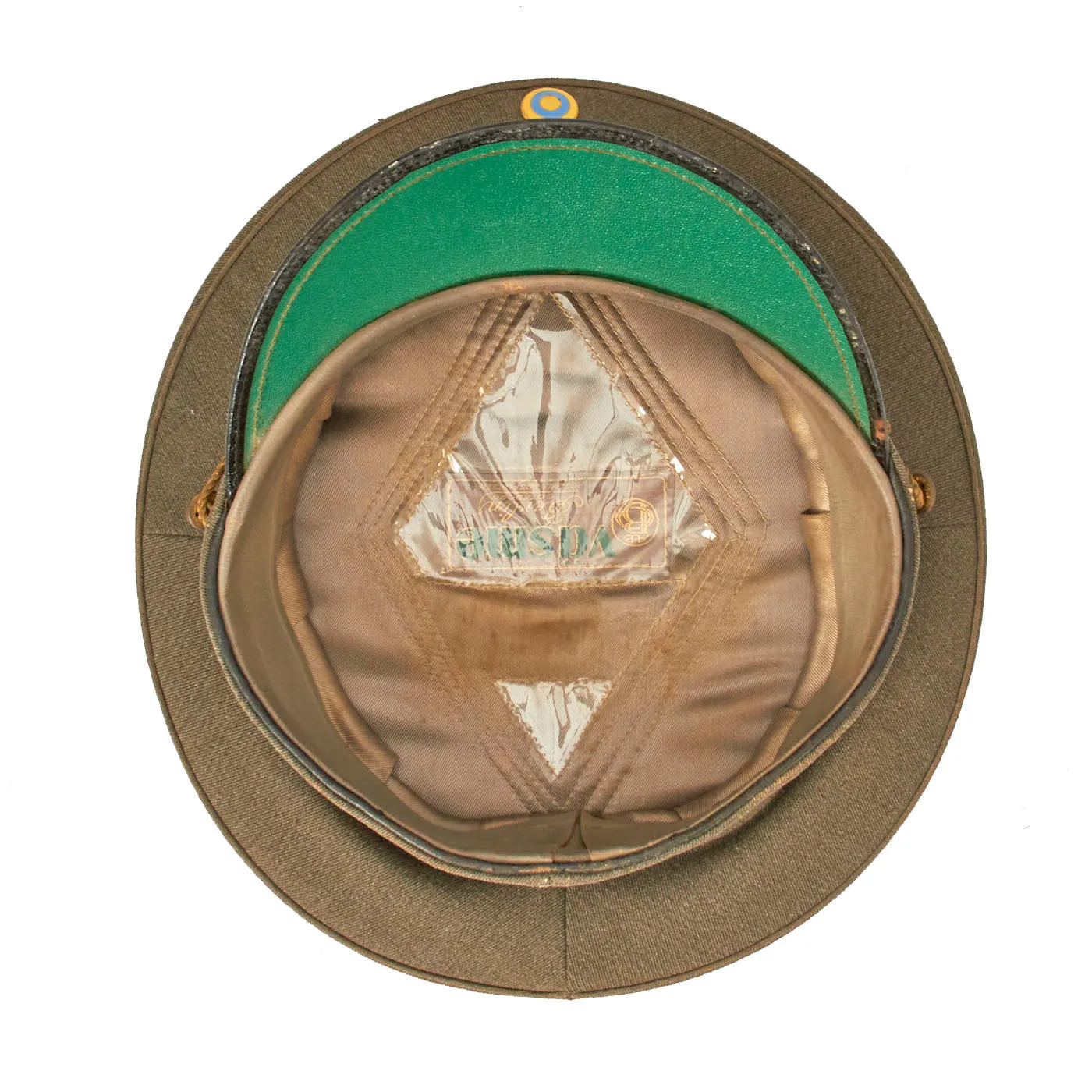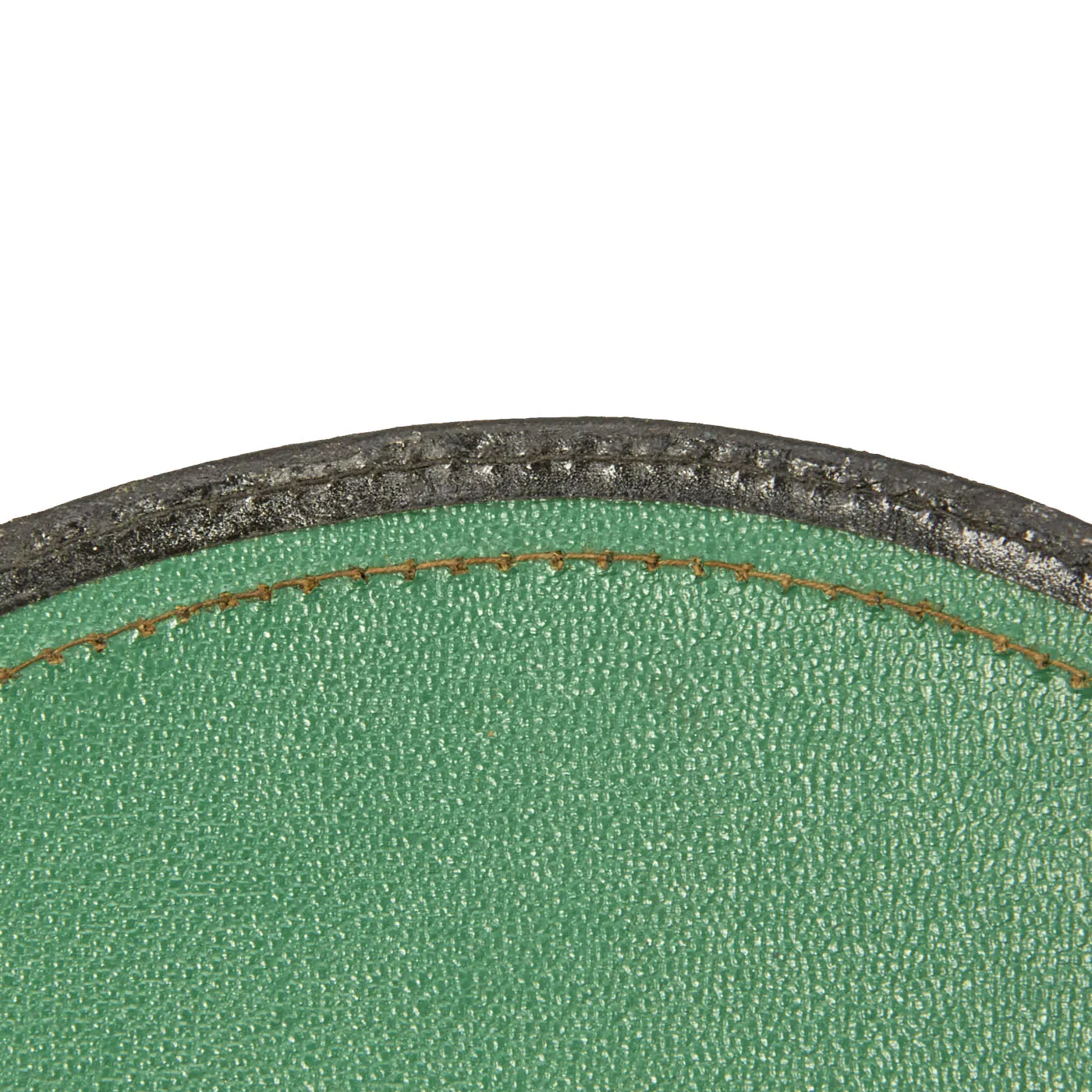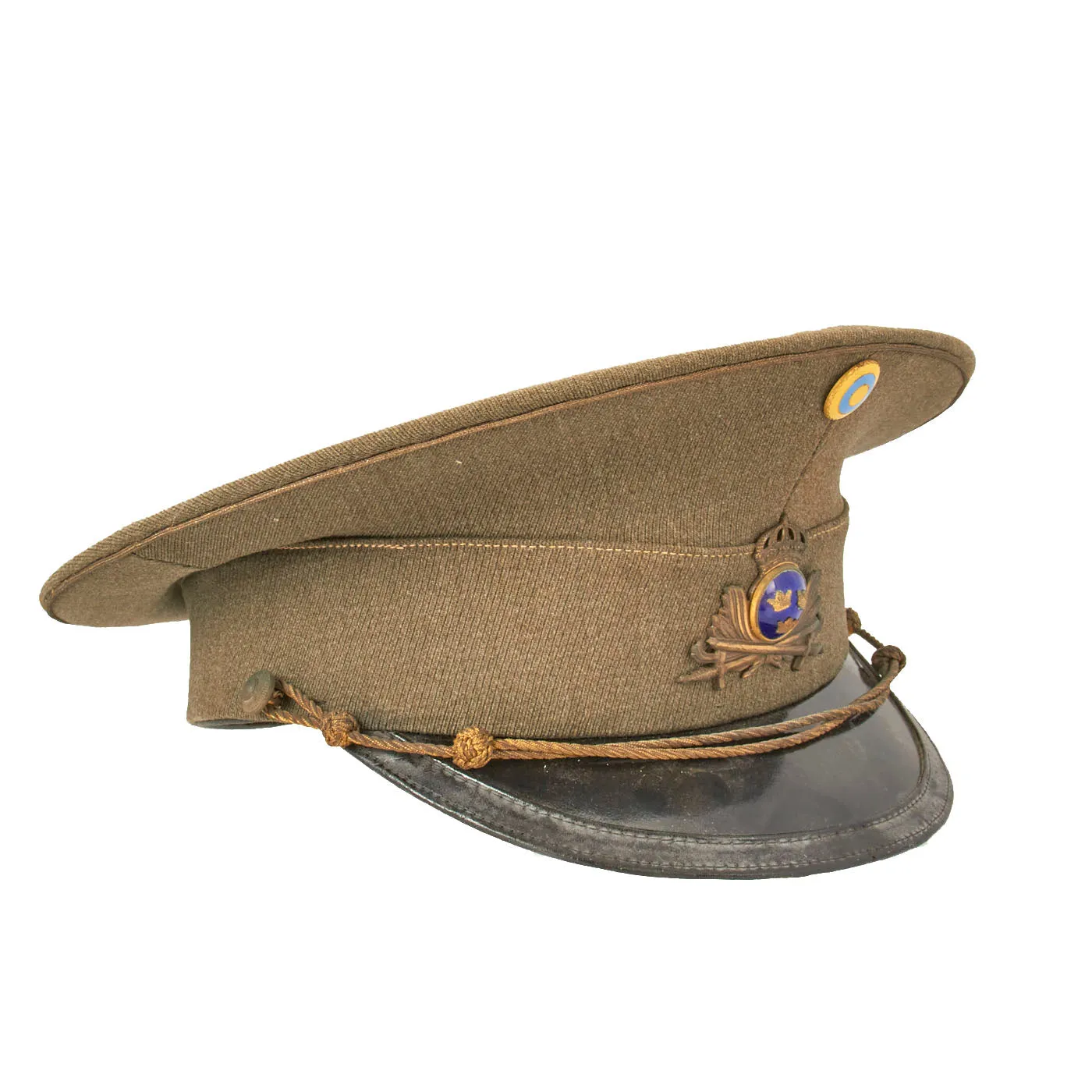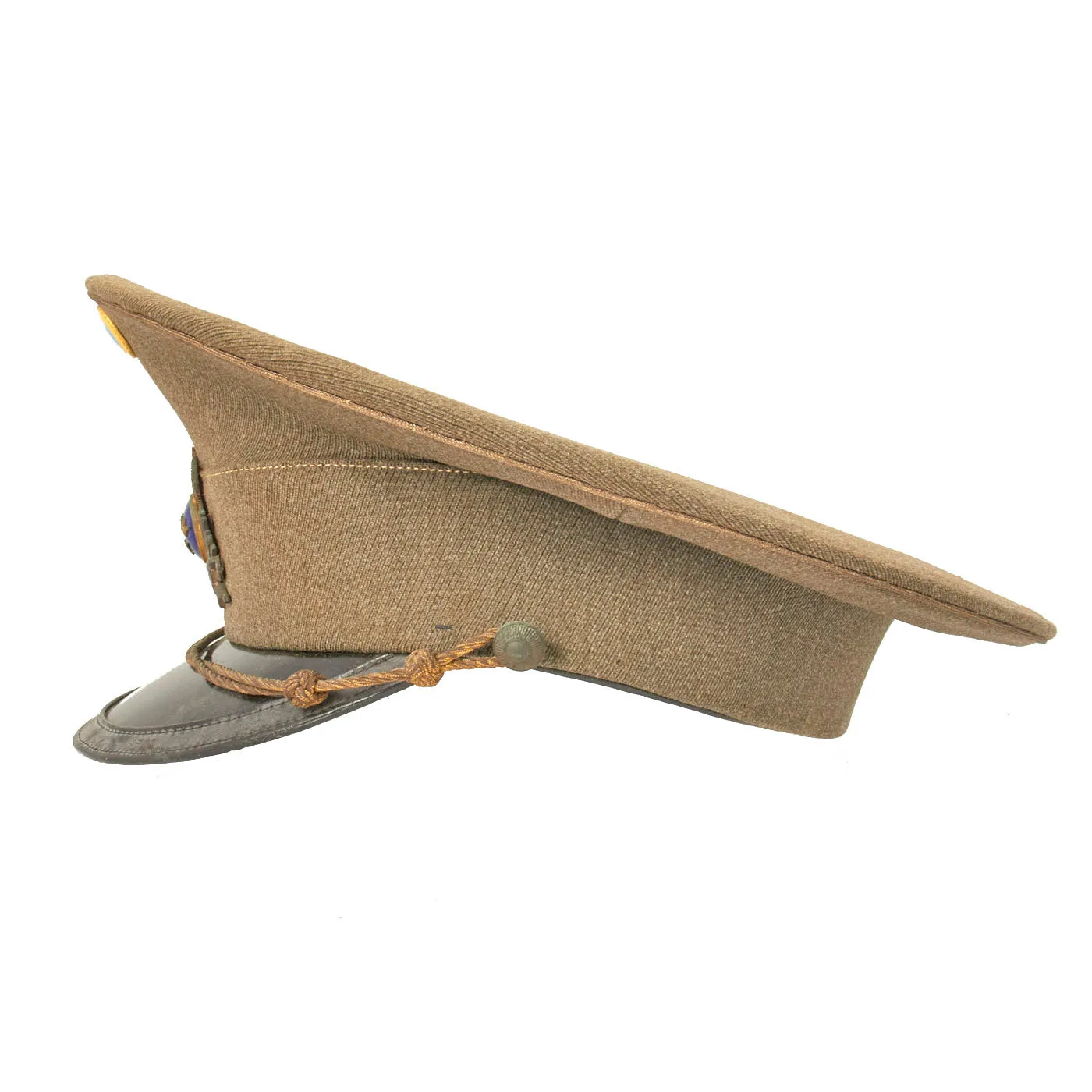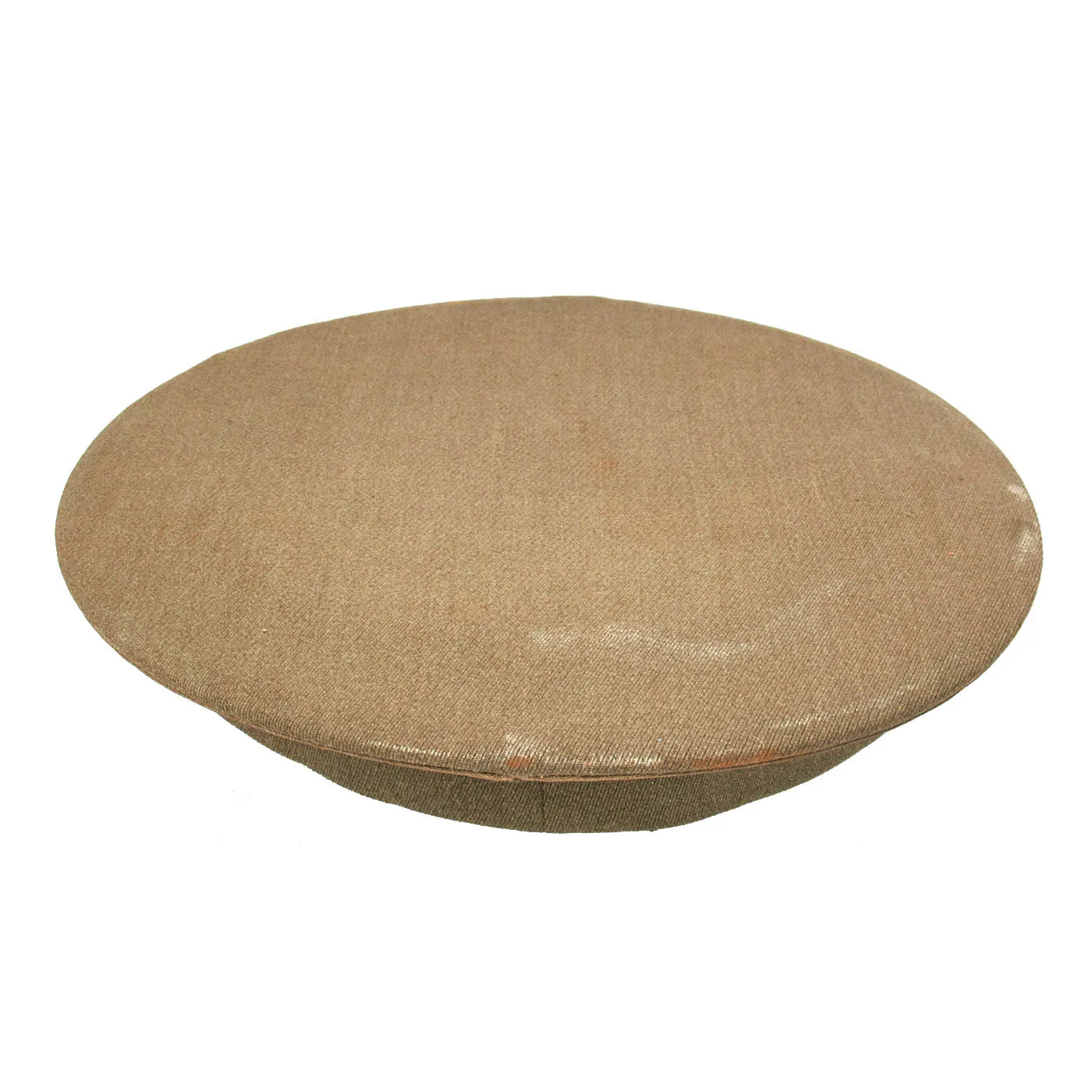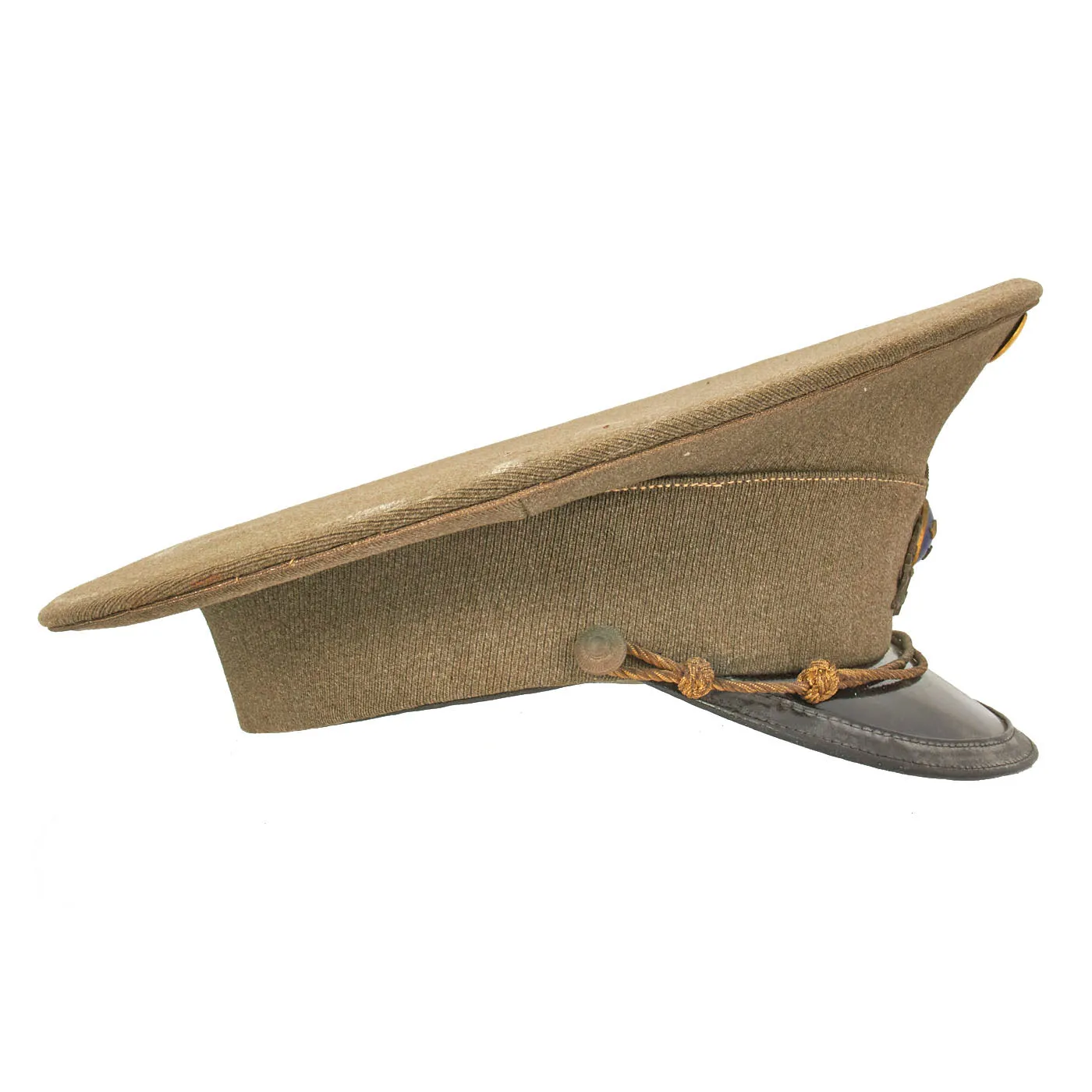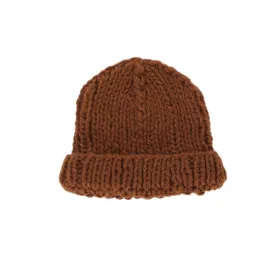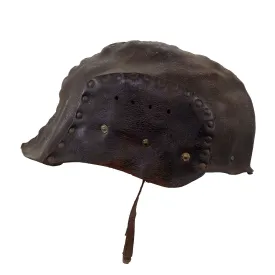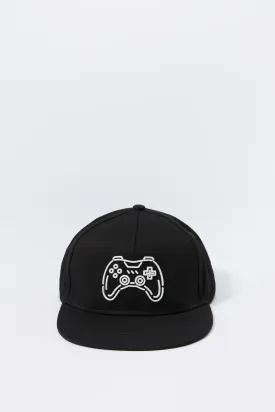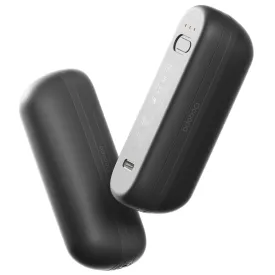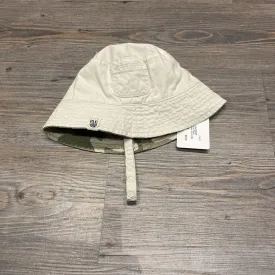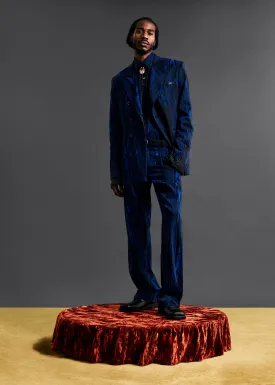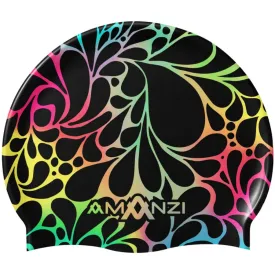Original Item: Only One Available. In 1939, shortly before the outbreak of WWII, a new uniform was introduced, uniform m/1939. The plan was to introduce both a battle dress uniform and a service dress uniform. However, due to the outbreak of the war, only the battle dress uniform was introduced. The color of the uniform was gray-brown-green. The jacket was single-breasted with 4 buttons and equipped with business suit style lapels. The collar was turned down (no standing collar). There were two breast pockets and two side pockets. A leather belt was worn around the waist. The greatcoat m/1939 was in the same color as the jacket.
This is a lovely example of the Model 1939 uniform series Officers’ Peaked Visor in a size 58 ½. The front of the cap has the classic blue enameled “three crowns” emblem. Three Crowns is a national emblem of Sweden and is used as a symbol of official State authority. The Three Crowns are also used as an official sign by the armed forces. Hats and caps were equipped with a round medallion containing the Three Crowns. Officers wore a blue enameled medallion while the NCO wore a brass medallion.
Towards the top of the cap is the Swedish Nationality Cockade in the Swedish colors of yellow and blue. This version was instituted in 1941, replacing the earlier all brass cockade. The side buttons still feature the same design as the earlier cockade. The leather visor, gray leather liner, lining and decorative chin strap are all in lovely condition and free of damage.
Overall condition is very good with minor wear. Comes ready to display!
Sweden maintained its policy of neutrality during World War II. When the war began on 1 September 1939, the fate of Sweden was unclear. But by a combination of its geopolitical location in the Scandinavian Peninsula, realpolitik maneuvering during an unpredictable course of events, and a dedicated military build-up after 1942, Sweden kept its official neutrality status throughout the war. At the outbreak of hostilities, Sweden had held a neutral stance in international relations for more than a century, since the end of the Napoleonic Wars in 1814 and the invasion of Norway.
At the outbreak of war in September 1939, twenty European nations were neutral. Sweden was one of only nine of these nations to maintain this stance for the remainder of the war, along with Ireland, Portugal, Spain, Switzerland, and the microstates of Andorra, Liechtenstein, Vatican City, and San Marino. The Swedish Government made a few concessions, and sometimes breached the nation's neutrality in favor of both Germany and, later, the Western Allies.
During the German invasion of the Soviet Union (June–July 1941), Sweden allowed the Wehrmacht to use Swedish railways to transport the German 163rd Infantry Division along with heavy weapons from Norway to Finland. Until 1943, German soldiers traveling on leave between Norway and Germany were allowed passage through Sweden—the so-called permittenttrafik. Iron ore was sold to Germany throughout the war and Germany owned several mines in Sweden that had been bought by German companies before the outbreak of the war. These mines were called Tyskgruvorna (German mines). For the Allies, Sweden shared military intelligence and helped to train soldier refugees from Denmark and Norway, to be used in the liberation of their home countries. It also allowed the Allies to use Swedish airbases between 1944 and 1945.
Swedish neutrality remains a subject of debate. Proponents argue that during the war, Sweden softened its policy against accepting refugees, admitting thousands of Jews and political dissenters from Norway and Denmark. Opponents however highlight, as Winston Churchill did, that Sweden “ignored the greater moral issues of the war and played both sides for profit".




